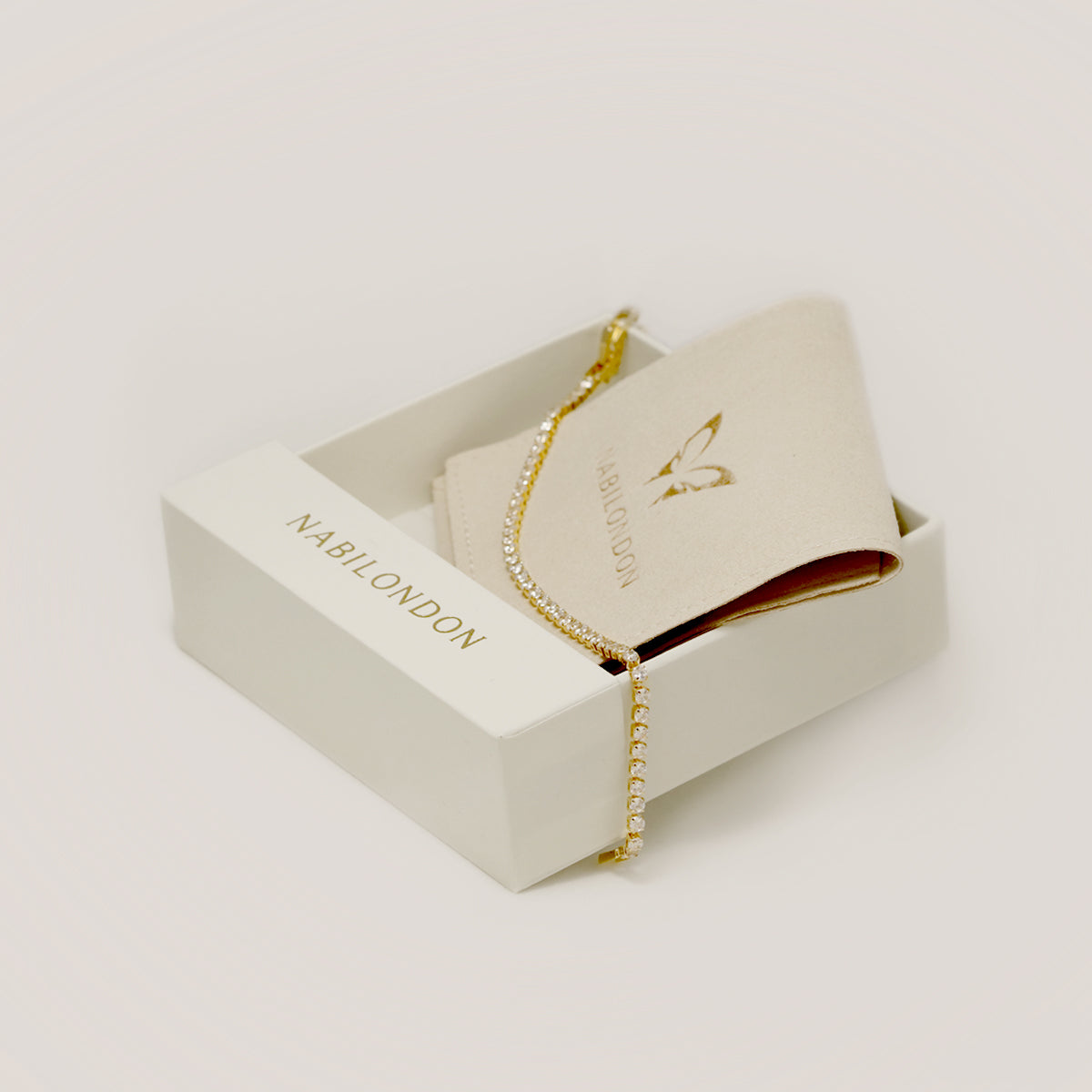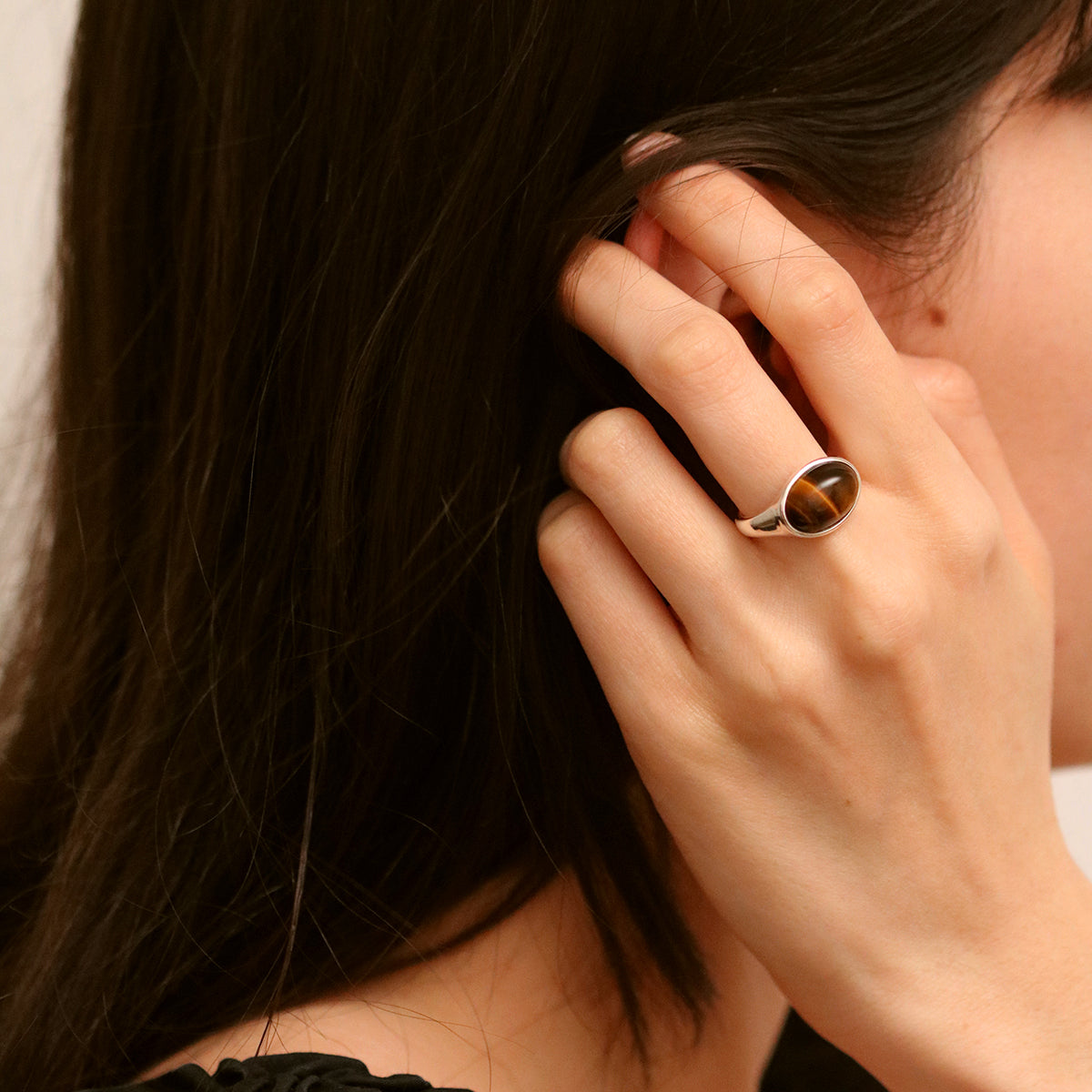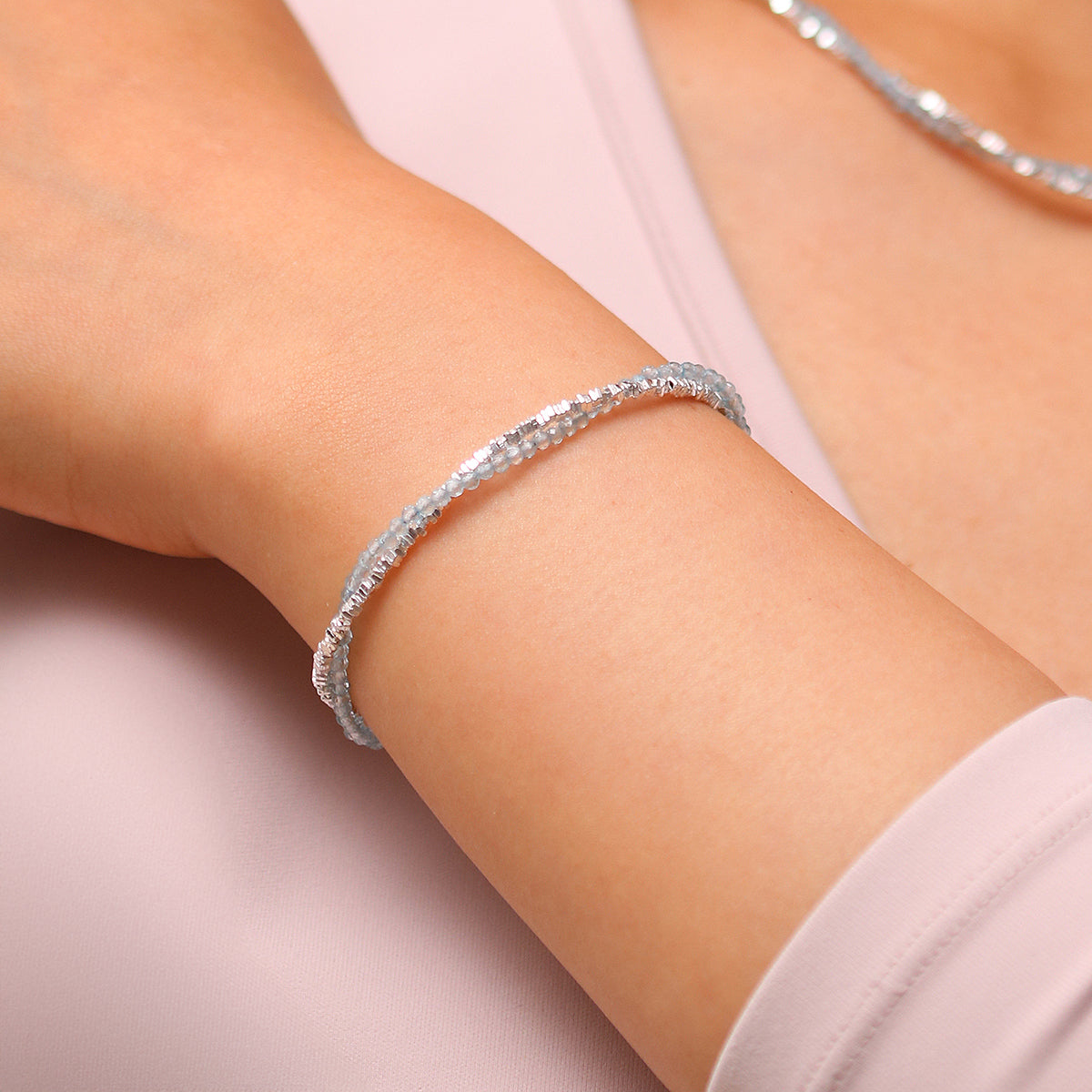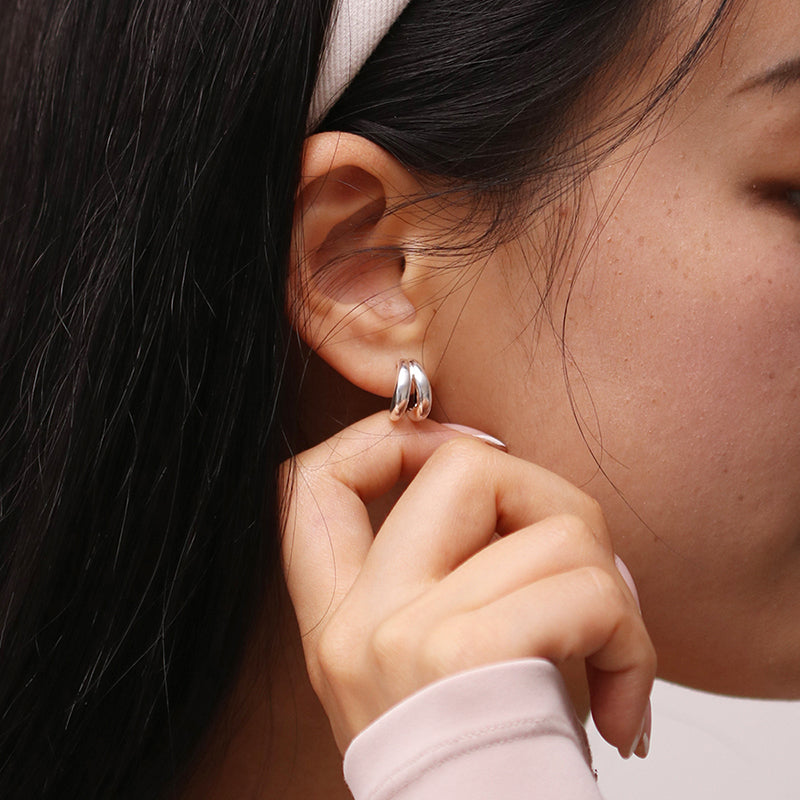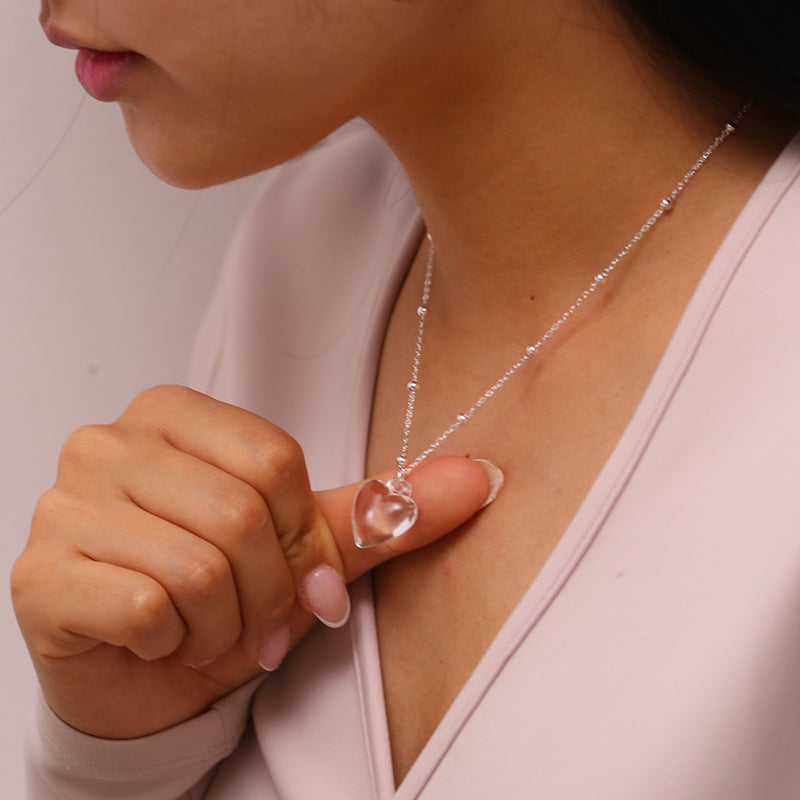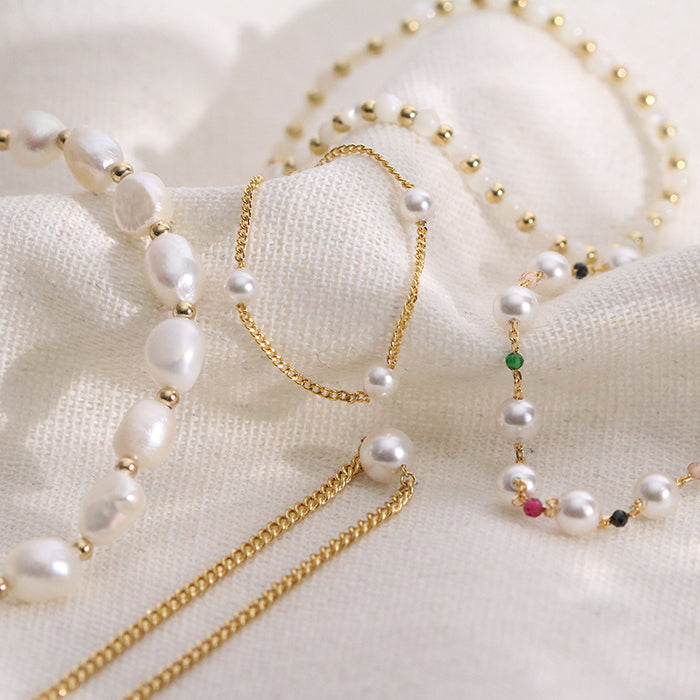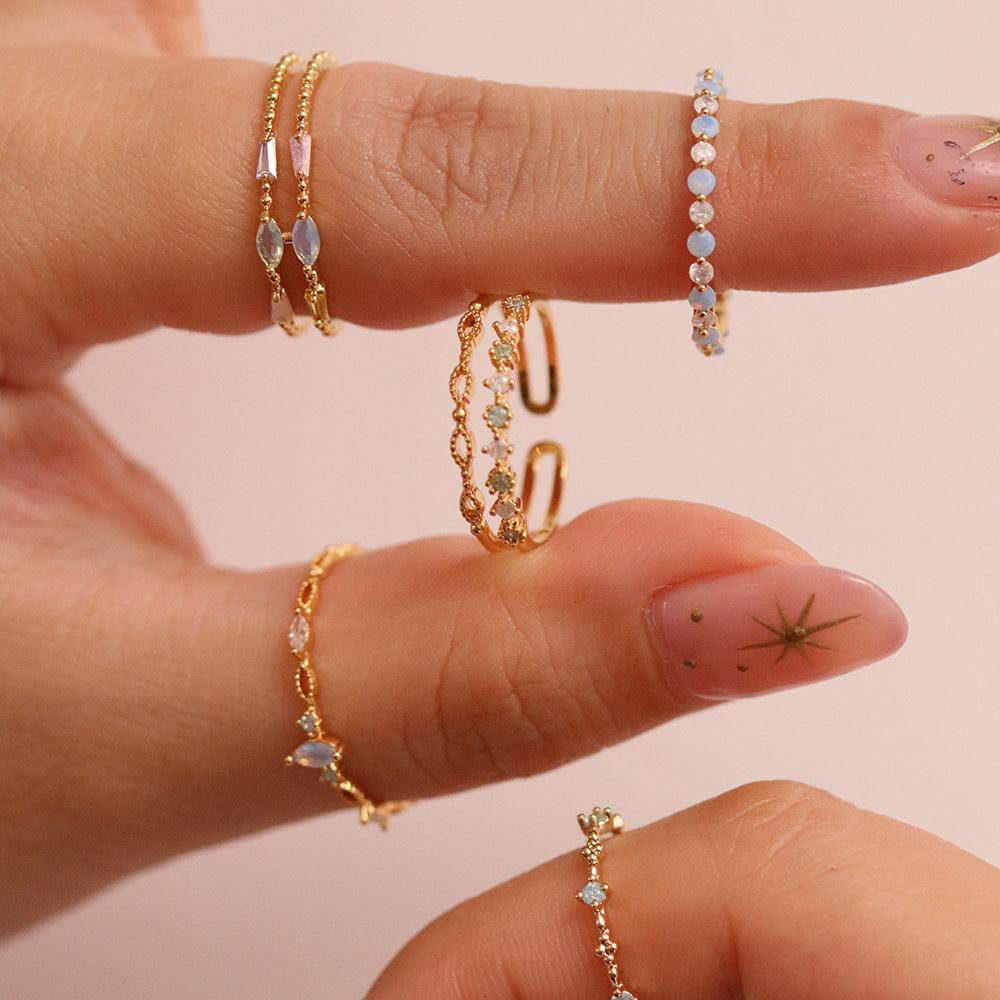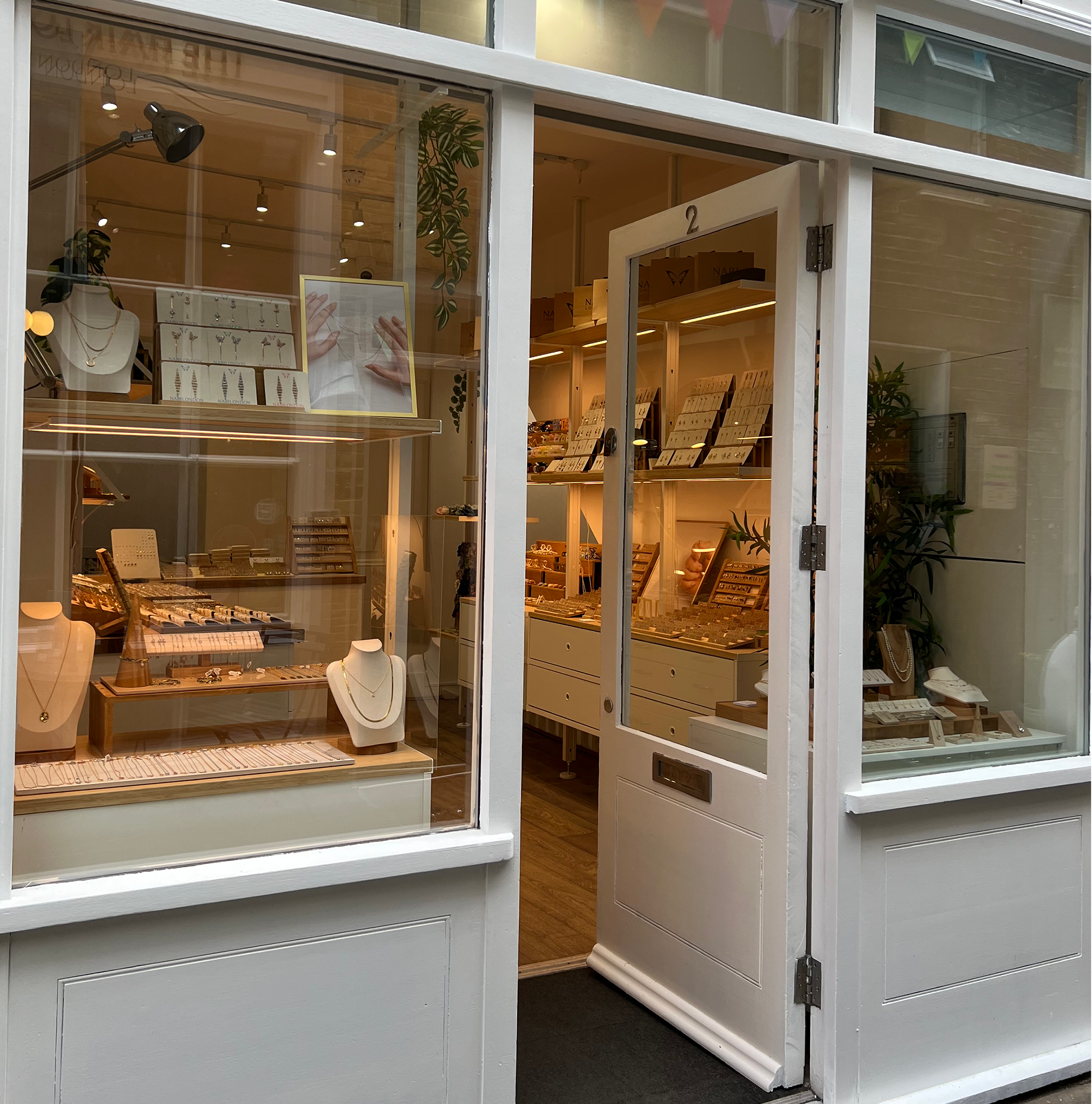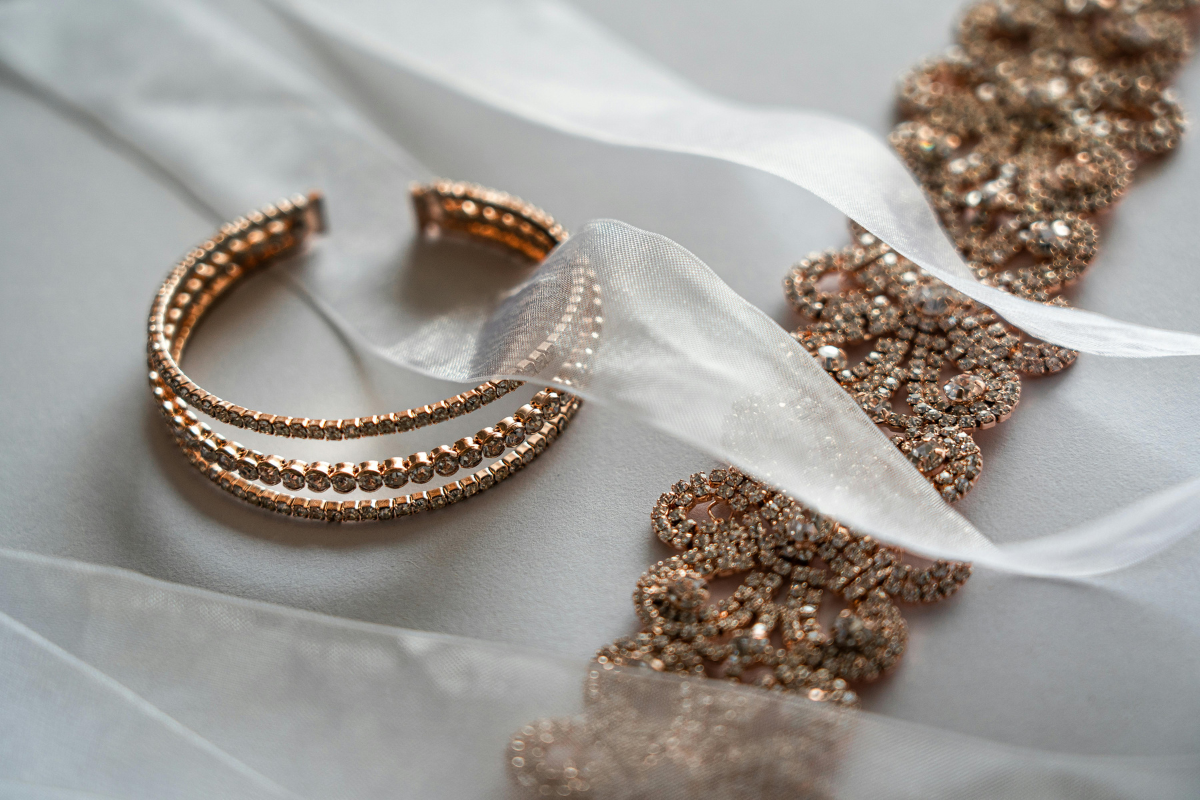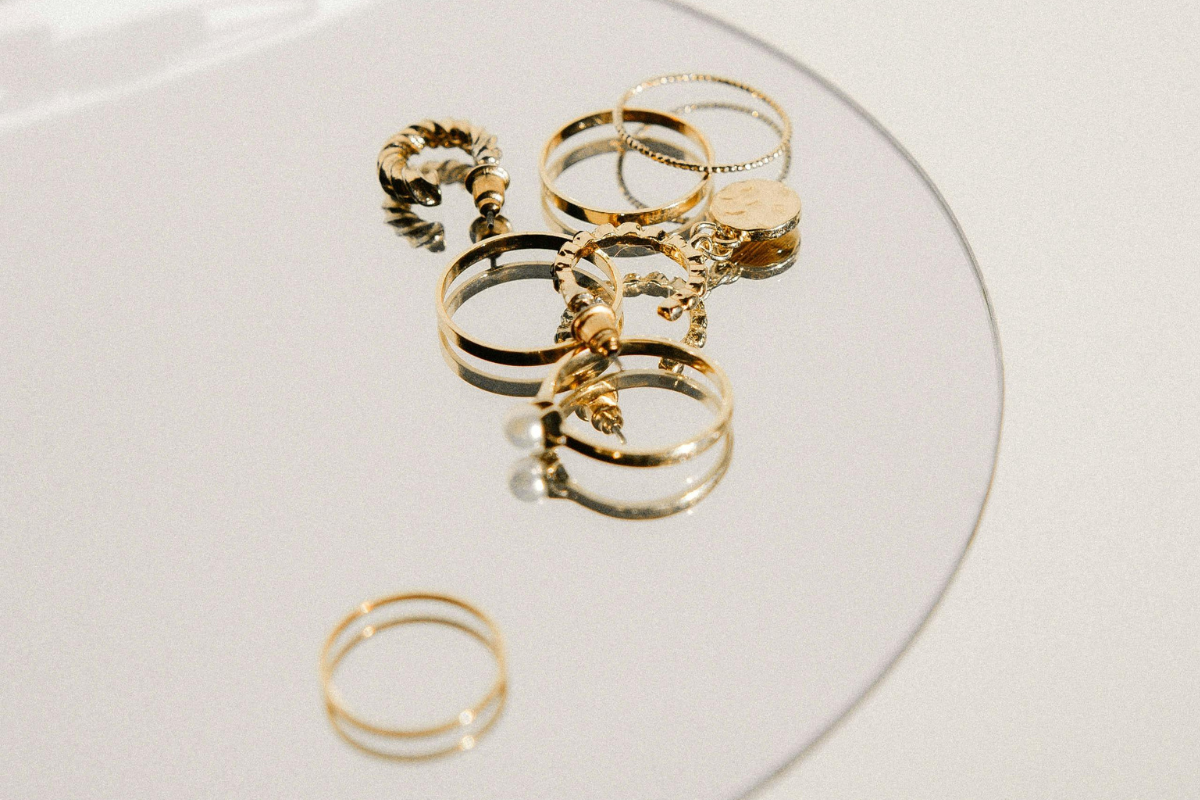
How To Spot The Differences Between Solid Gold And Gold Plated
Let's talk about gold! Whether it's a dainty solid gold necklace for a loved one or an investment piece to pass down through generations, there will be a point at which you wonder how to spot the clear and not-so-clear distinctions between solid gold pieces and gold-plated designs. Let's take a look at these types of gold, the key differences between them and how you can use this information to make informed decisions when buying quality pieces you can wear forever.
What Is Solid Gold?
Whether referred to as solid gold, 24k gold or pure gold, this type of jewellery is the most valuable, long-lasting and sought-after. This is because it is the only gold made purely of gold itself - in solid gold, you should never find a mix of other metals. In most cases, to distinguish this type of gold, you should see a hallmark stamped within the piece, indicating its purity level; this will look like '24K', '999' or '99.9% Pure Gold'.
Solid Gold: The Pros & Cons
Purity
Solid gold jewellery is composed of only gold, making it resistant to corrosion and tarnishing, resulting in a more valuable piece to add to your collection.
Hypoallergenic
If you are usually prone to an allergic reaction when wearing lower-quality pieces of jewellery, it may be worth investing more in solid gold. Solid gold jewellery tends to be less likely to cause reactions compared to other common, less-expensive materials, making it the better choice for those with sensitive skin.
Longevity
As mentioned previously, the purity of solid gold jewellery makes it an incredible choice for long-lasting, timeless pieces. Solid gold pieces can last a lifetime with the right care and consideration, so it's definitely worth the investment.
Softness
Unlike some other materials, solid gold can be more prone to denting or scratching if worn every day. This is due to the softness of the pure gold in the piece. Please note that the higher your gold's karat, the softer it will be!
The Expense
Unlike gold-plated jewellery, solid gold pieces tend to come at a higher price point because of their gold content. While it is worth the investment, if you have a lower budget, solid gold pieces may not be right for you at this time.
What Is Gold-Plated Jewellery?
Also known as a gold overlay or gold vermeil, gold-plated jewellery contains mostly base metals that are not gold. This could be sterling silver or brass. However, this base metal will be coated in a thin layer of gold to give the appearance of a solid gold piece. The process for coating these rings, earrings, necklaces and bracelets in a gold layer is called electroplating. The gold layer on these articles of jewellery will be measured in microns rather than karats, as you find in solid gold.

Gold Plated: The Pros & Cons
Variety
If you are someone who enjoys switching up the style of their pieces fairly often, be that dainty, chunky, simple or statement, then gold plated may be the right option for you. Gold-plated jewellery offers a variety of styles and designs, perfect for versatile collections and creativity.
Affordability
As these pieces mostly consist of other mixed metals like sterling silver, they come at a fraction of the price of solid gold jewellery. This makes it an attractive and worthwhile purchase for those on a tighter budget or those just looking for something cheap and cheerful.
Durability
While not as durable as solid gold, most gold-plated jewellery pieces are still relatively long-lasting when handled with the correct care and maintenance.
Allergic Reactions
If you happen to have sensitive skin, gold-plated jewellery may be too harsh for you. Some people are prone to experiencing allergic reactions to this type of jewellery due to the base metal not being as pure as solid gold. This happens especially with pieces that contain nickel.
Tarnishing
If not properly taken care of, gold-plated jewellery can sometimes tarnish or lose its 'gold' appearance over time. This can be especially true when coming into contact with a lot of moisture, harsh chemicals or cleaning products. If you have gold-plated pieces to wear every day, ensure you take these off before conducting chores or washing your hands.
Limited Gold Appeal
Unlike solid gold, due to its thin layer, the gold on these pieces may wear off over time, especially when worn regularly. Once the top gold layer has worn off, you will have a piece that is exposing the base metal underneath. This gold piece may then start to appear as silver or rose gold.
How To Spot The Difference?
- Look for the hallmarks (i.e., 24k, 99.9% or 999)
- Consider the weight of the piece (solid gold tends to be heavier)
- Check for wear and tear (peeling or fading may suggest it's gold-plated)
- The acid test (have a professional determine the purity of the jewellery with an acid test - never do this at home, as you may damage the piece)
While solid gold offers quality, durability, and purity, it comes with a larger price tag. Gold plated, however, may be prone to allergic reactions and tarnishing - something to keep in mind when making your decision. Understanding the difference between gold-plated and solid gold jewellery is essential when making an informed purchase, be that a piece for your collection or a gift for a loved one. Knowing how to spot the difference means you can head into a store, buy jewellery online and shop with confidence.

